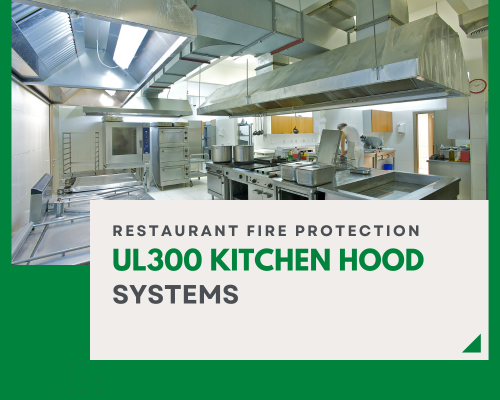
by Tim Francine
Prior to November 21st, 1994, most commercial cooking involved animal fat. These deep fryers were poorly insulated which made cooking temperatures inconsistent. The extinguishing unit that protected those kitchens was a dry chemical system which would smother the fire.
Today, vegetable oils are used in commercial cooking. These vegetable oils heat to cooking temperatures very quickly and have a substantially higher flashpoint of approximately 600 degrees Fahrenheit versus the 200 degrees Fahrenheit flashpoint of animal fats, thus creating potential for much larger and hotter fires. Today’s deep fryers also have excellent heat retention and are well-insulated. Because of these advances, dry chemicals are no longer effective in extinguishing these fires.
UL300 systems use wet chemicals that serve two purposes:
1. Similar to dry chemicals, they smother the fire. This is because wet chemicals are a surfactant that creates a foam blanket over the oil hazards.
2. Unlike dry chemicals, they cool the liquids to prevent reignition.
When a fire starts in a protected area, heat sensitive links, or electric thermal detectors, activate the kitchen hood system. The system stops the cooking appliance’s gas or electric supply. An extinguishing agent is then released through nozzles and onto the appliances, plenum, and duct.
NOTE: Because kitchen fire systems are only capable of a single discharge, you should also have a Class K fire extinguisher close by in case the system fails to act or a re-flash occurs.
Kitchen hood systems have an automatic detector response that acts fast to suppress flames. They also eliminate the need for a constant supply of the suppressing agent and a manual shut-off of the appliance’s gas and electric while blocking any danger of a violent reaction that may spread the flames or spill cooking oil.
The wet chemicals suppress a fire by a process called saponification. Saponification is a chemical reaction that occurs when a vegetable oil or animal fat is mixed with a strong alkali. The saponification value is a measure of the amount of potassium hydroxide needed to neutralize one gram of fat or oil.
If you have any questions about how kitchen hood systems work or how to install one in your commercial kitchen environment, contact a fire professional at Summit Fire & Security.

